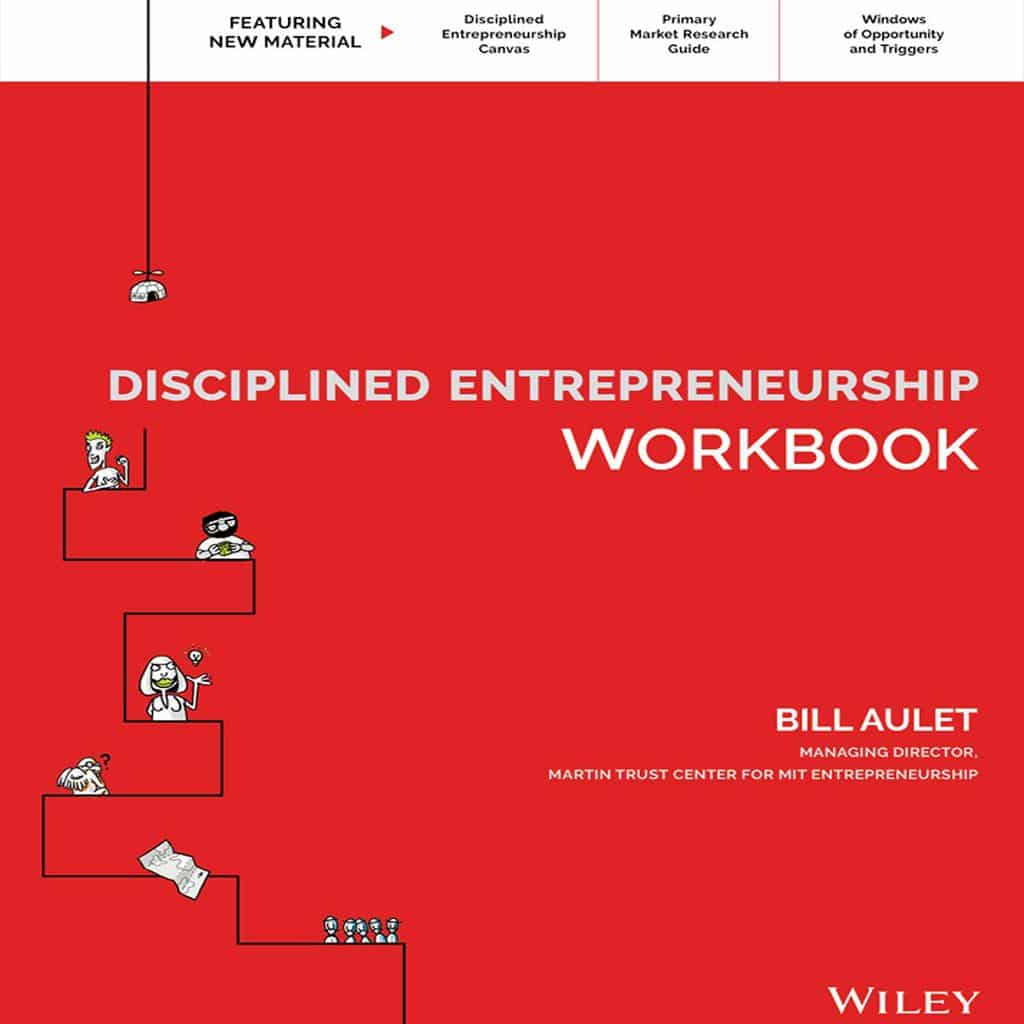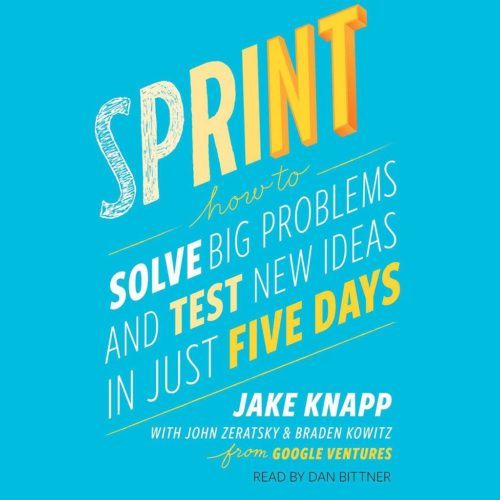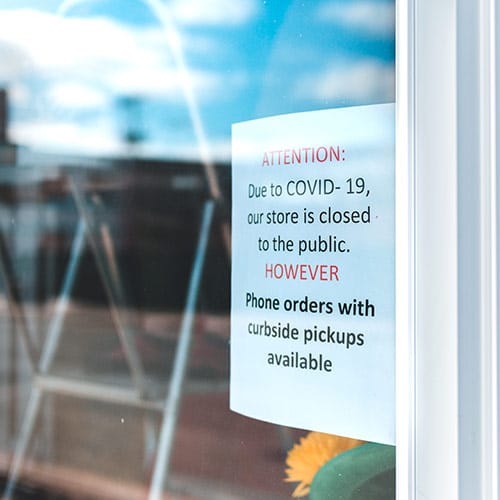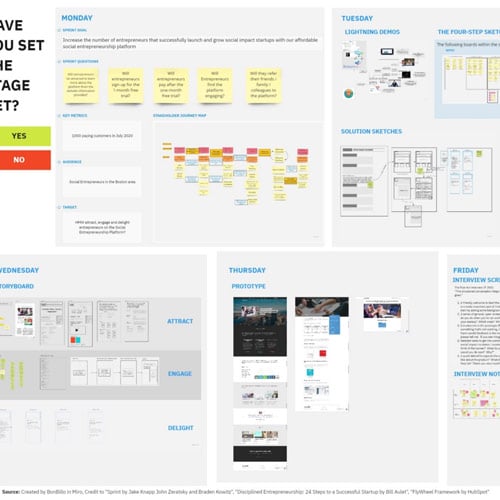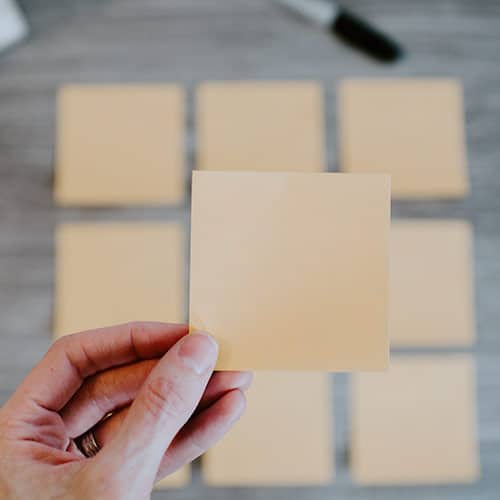Sprint to Design Solutions
Let's design a solution that offers a strong value proposition for your startup's target customer. The solution should be better than what currently exists for your users' top 2-3 priorities.
We recommend applying Sprint by Jake Knapp with John Zeratsky and Braden Kowitz from Google Ventures to design your prototype solution and test it with users in just 5 days. 🏃♂️💨
This allows you to significantly de-risk product assumptions by getting users’ reactions to your solution before building a product. 🔮
In a Sprint, team members “work alone together” – each person sketches alone and has time for deep thought. Several competing ideas come to the table without the groupthink of a group brainstorm, and the most promising one is selected to storyboard. 💡
Sprint by Jake Knapp with John Zeratsky and Braden Kowitz
Sprint from Google Ventures is an accelerated design thinking framework adapted from IDEO's methodology to solve big problems and test new ideas in just 5 days.
Check out our highlights on 'Sprint to select your target problem' and an 'Example of selecting a target problem to combat children's malnutrition' by Suraj Kripalani, Co-Founder of BonBillo.
Suraj Kripalani, Co-Founder at BonBillo, discusses selecting your target problem using 'Sprint' and 'Disciplined Entrepreneurship'.
Suraj Kripalani, Co-Founder at BonBillo, provides an example of selecting a target problem to combat children's malnutrition.
The BonBillo team applied the Sprint methodology in April 2020 to create an open-source map of measures needed to combat the coronavirus crisis and pose specific 'How might we' questions for entrepreneurs to solve. Check out our map here.
We also ran a Remote Sprint to design our platform customer experience and created a Sprint Canvas Template in Miro to help remote teams who are running a Sprint.
We found Miro to be most useful for our remote Sprints and wanted to share our template with others who may find it helpful. Reading Sprint is a prerequisite to successfully applying the Canvas.
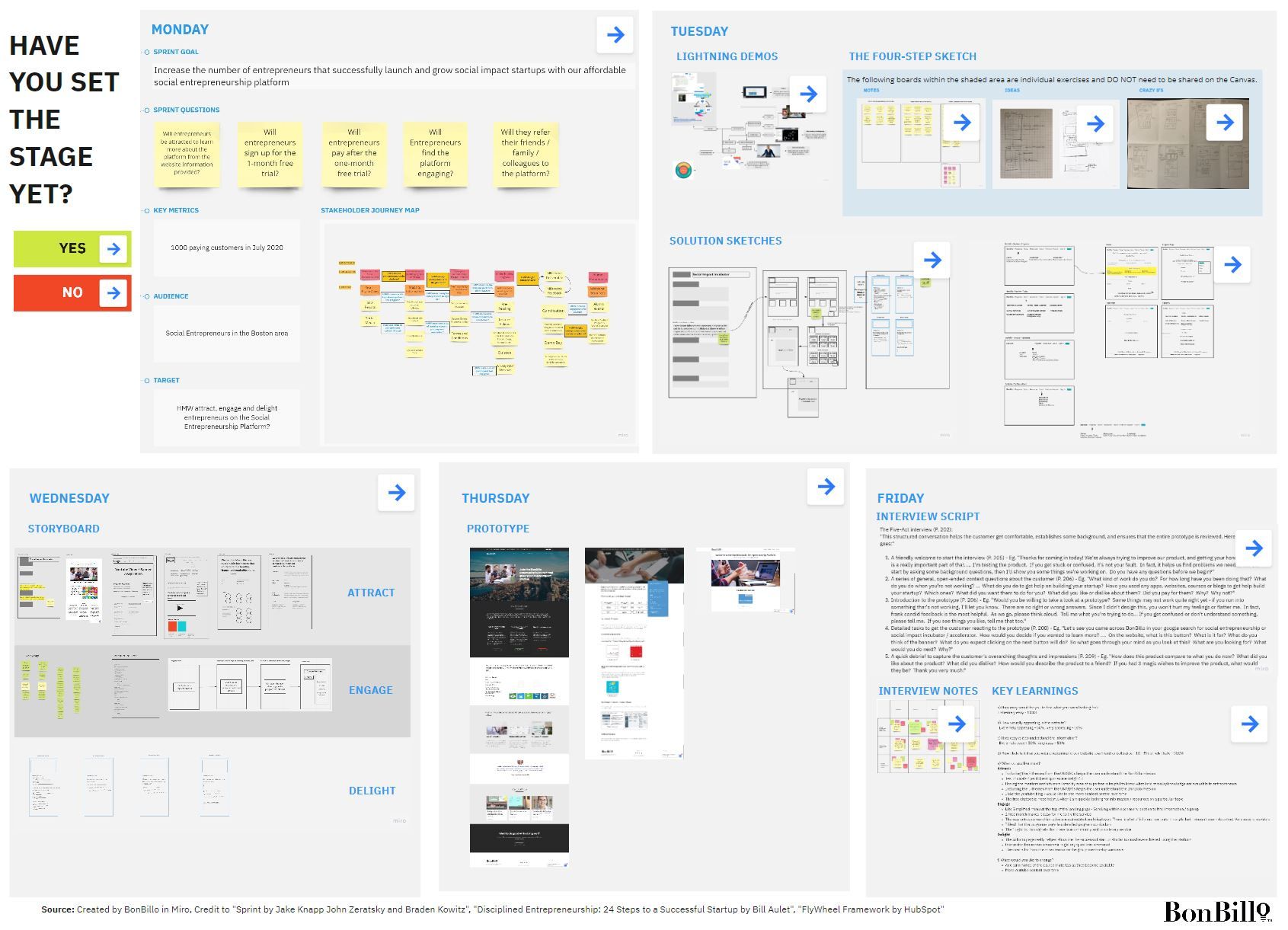
Set the Stage
"Sprints are most helpful for challenges where the stakes are high, you don't have enough time or you're just plain stuck, and can benefit from rapid customer feedback to a prototype."
The Sprint book recommends an Oceans Seven team (or fewer) covering the following hats:
- Decider - CEO, Founder, Product Manager, Head of Design
- Finance Expert - CEO, CFO, Business Development Manager
- Marketing Expert - CMO, Marketer, PR, Community Manager
- Customer Expert - Researcher, Sales, Customer Support
- Tech / Logistics Expert - CTO, Engineer
- Design Expert - Designer, Product Manager
- Facilitator - Manages time, conversations, process and summarizes discussions
Check out Google Ventures' Checklist for Setting the Stage by John Zeratsky.
Monday: Go from a large problem to a specific problem to solve
We start by setting a long-term goal for the Sprint – Where do we want to be 6 months, 1 year or 5 years from now?
We then list Sprint questions we'd like answered during the Sprint including what has to be true to meet our goal and what may cause failure. Next, we map the user journey, speak with experts and ask interesting 'How Might We' (HMW) questions before selecting the most promising one.
Check out Google Ventures' Checklist for Monday by John Zeratsky. Here's an example from the BonBillo Remote Sprint.
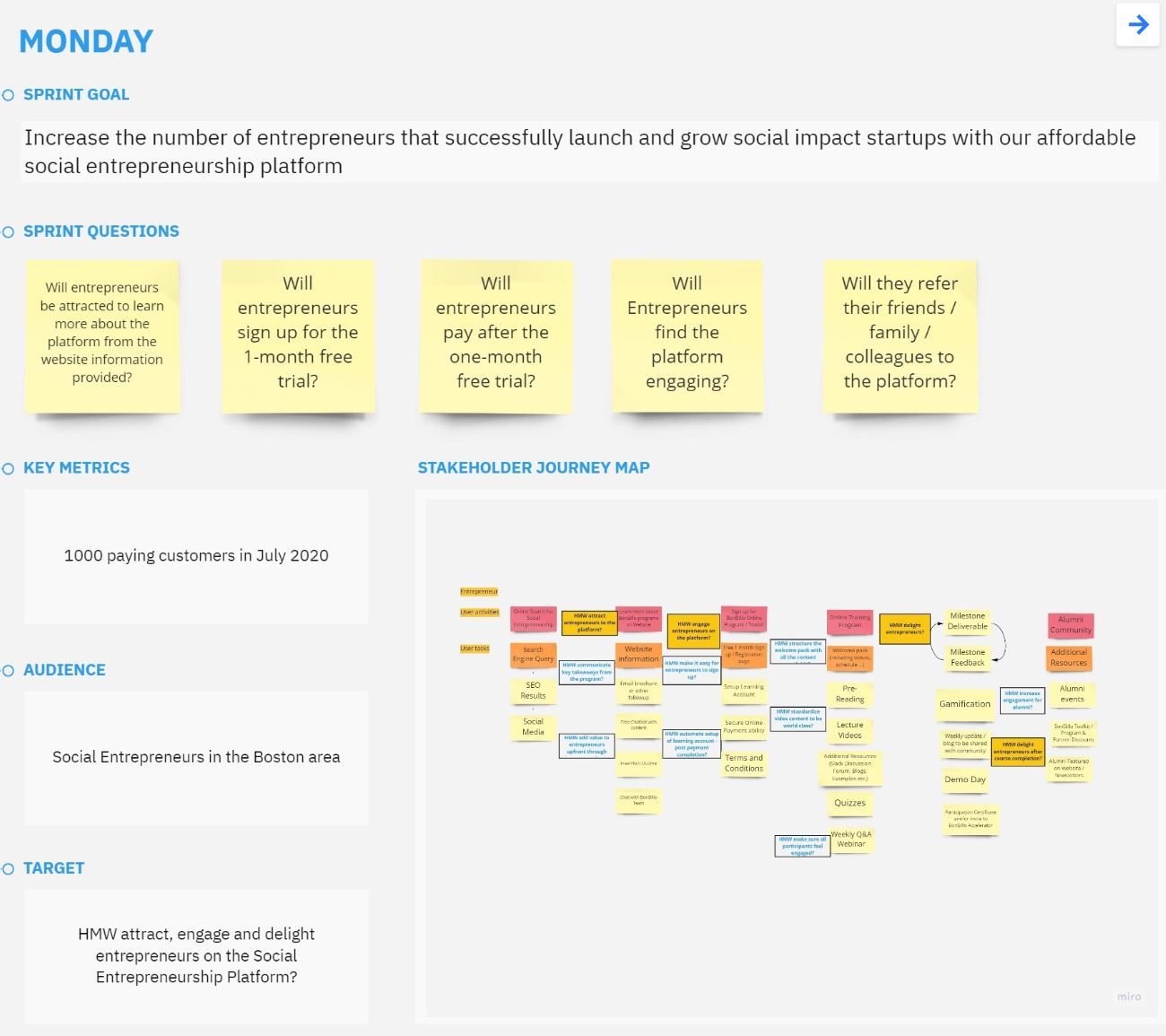
Tuesday: Share inspiration and sketch potential solutions
Teams shares inspiration from other brands with lightning demos and then follow a four-step sketch process to sketch potential solutions
Team members "work alone together" - each person sketches alone and has time for deep thought. Several competing ideas come to the table without the groupthink of a group brainstorm, and the most promising one is selected to storyboard on Wednesday.
Check out Google Ventures' Checklist for Tuesday by John Zeratsky. Here's an example from the BonBillo Remote Sprint.
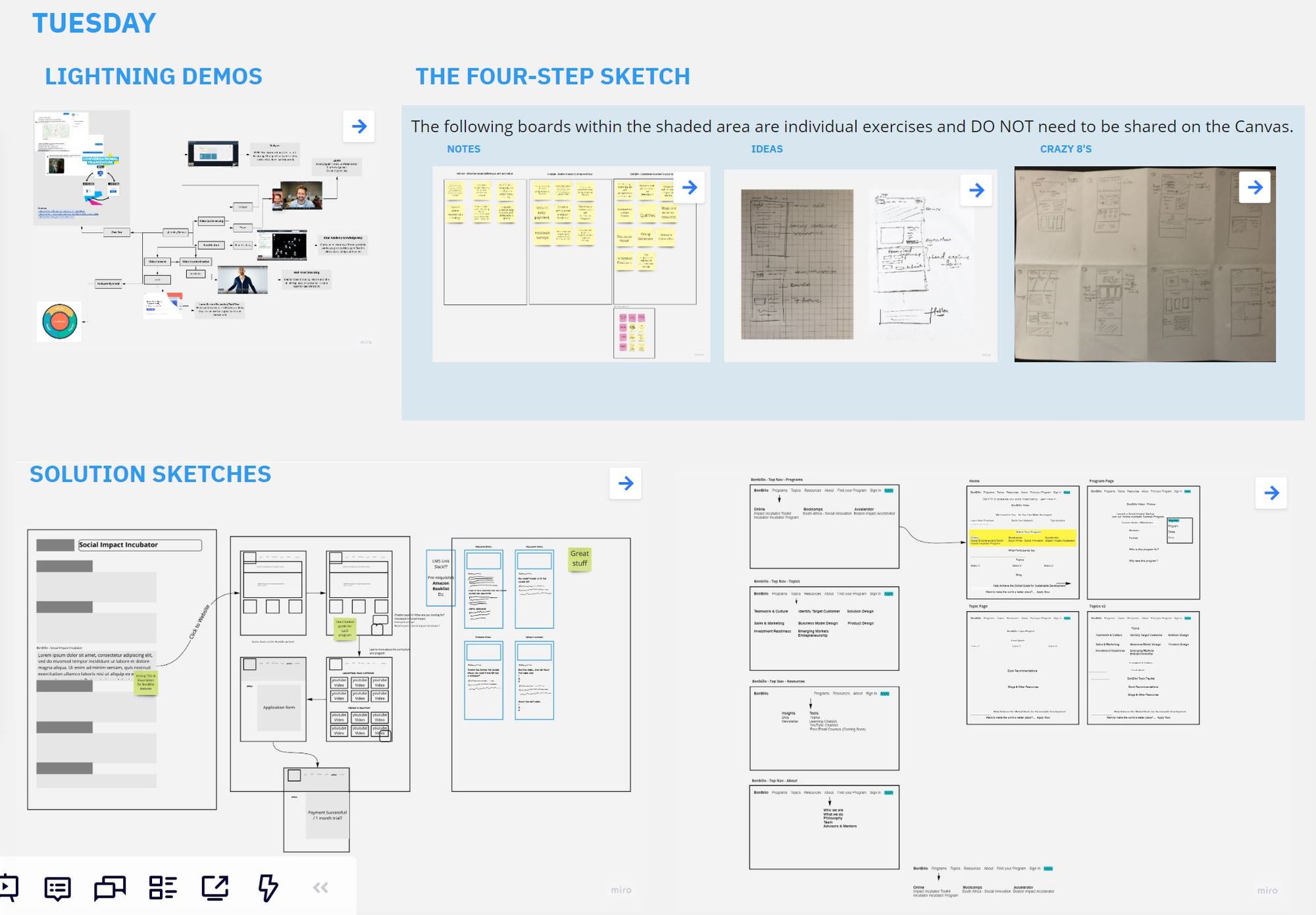
Wednesday: Select the best ideas and storyboard a solution
We recommend storyboarding the customer experience for your solution using 15 frames (3 rows and 5 columns) across the following stages using HubSpot's Flywheel framework.
- Attract - How the customer hears about your product to how your provide value upfront
- Engage - How the customer engages with and signs up for your product
- Delight - How the customer finds value from your product and recommends it to others
Check out Google Ventures' Checklist for Wednesday by John Zeratsky. Here's an example from the BonBillo Remote Sprint.
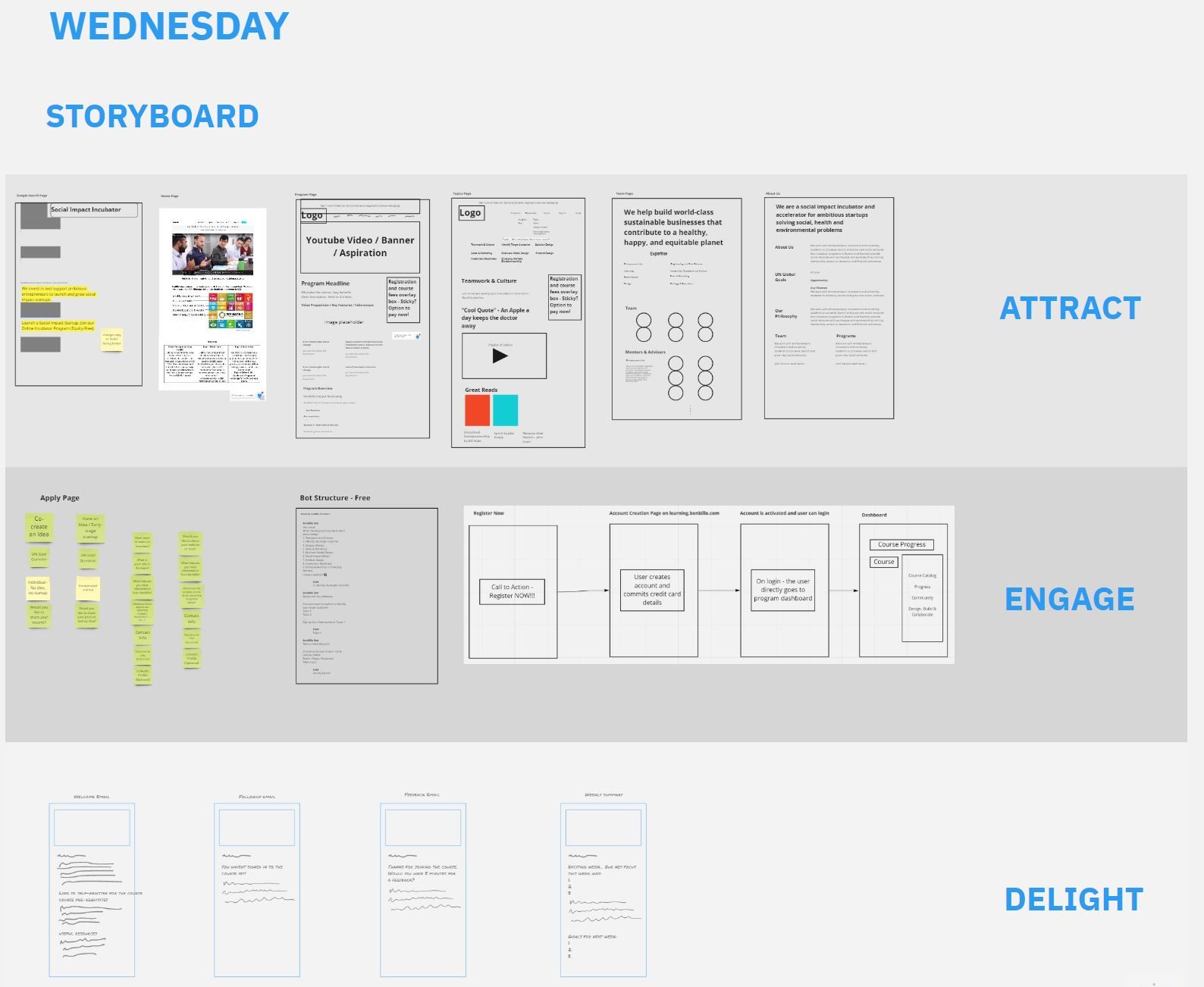
Thursday: Create a prototype that is real enough to get customers to react naturally and honestly
The Sprint book has 4 principles for prototyping:
- You can prototype anything
- Prototypes are disposable
- Build just enough to learn, but not more
- The prototype must appear real
Tools such as Keynote, Adobe, Powerpoint, Microsoft Word, Wordpress, Squarespace and 3D Printers can be used to prototype your solution in a day.
Check out Google Ventures' Checklist for Thursday by John Zeratsky. Here is an example from the BonBillo Remote Sprint using Wordpress.
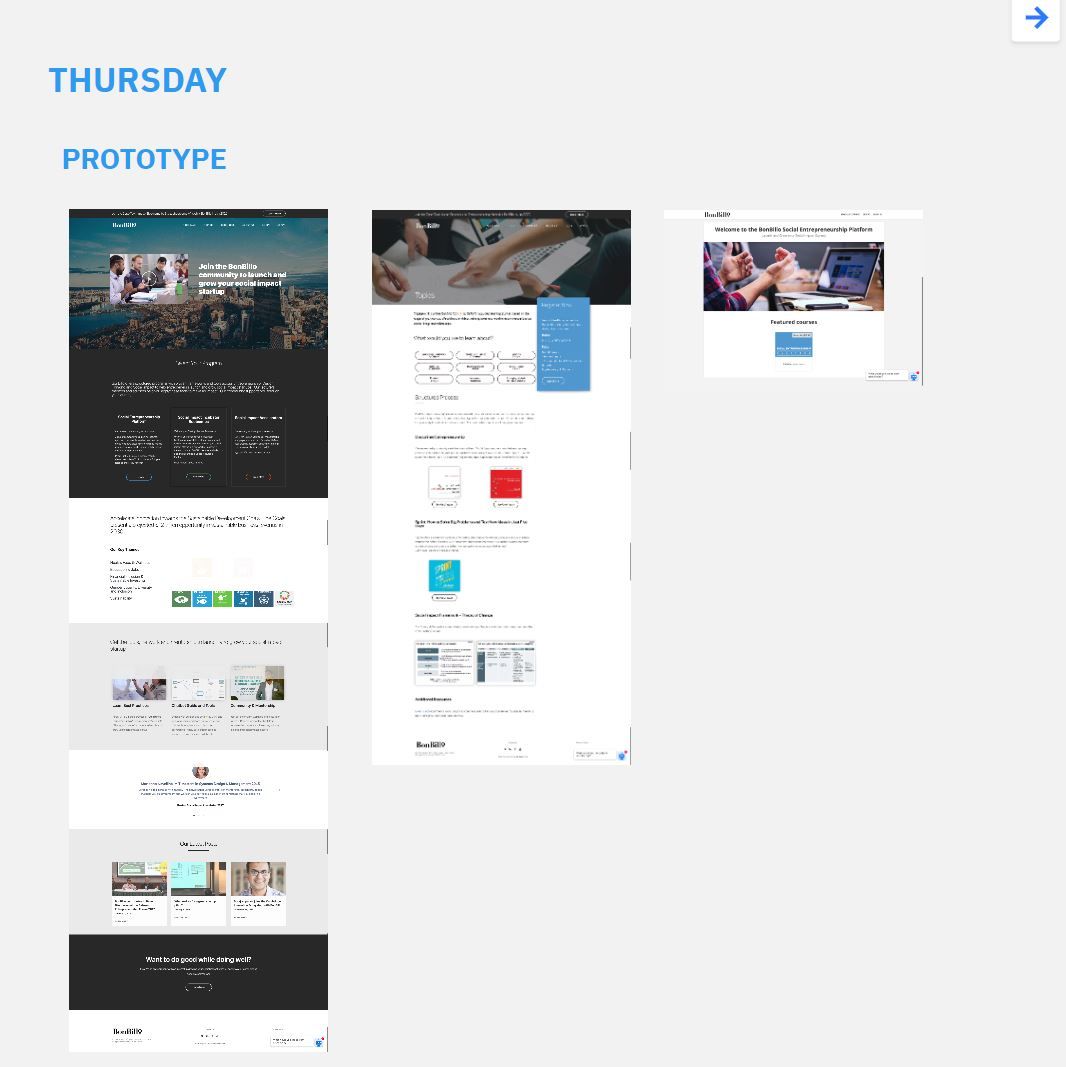
Friday: Interview customers and learn by watching them react to the prototype
The Sprint book recommends the following Five-Act Interview structure to get the customer comfortable, establish some background and ensure that the prototype is reviewed:
- A friendly welcome to start the interview
- A series of general, open-ended context questions about the customer
- Introduction to the prototype
- Detailed tasks to get the customer reacting to the prototype
- A quick debrief to capture the customer's overarching thoughts and impressions
The Sprint concludes by summarizing your learning and deciding next steps. Check out Google Ventures' Checklist for Friday by John Zeratsky. Here is an example from the BonBillo Remote Sprint.
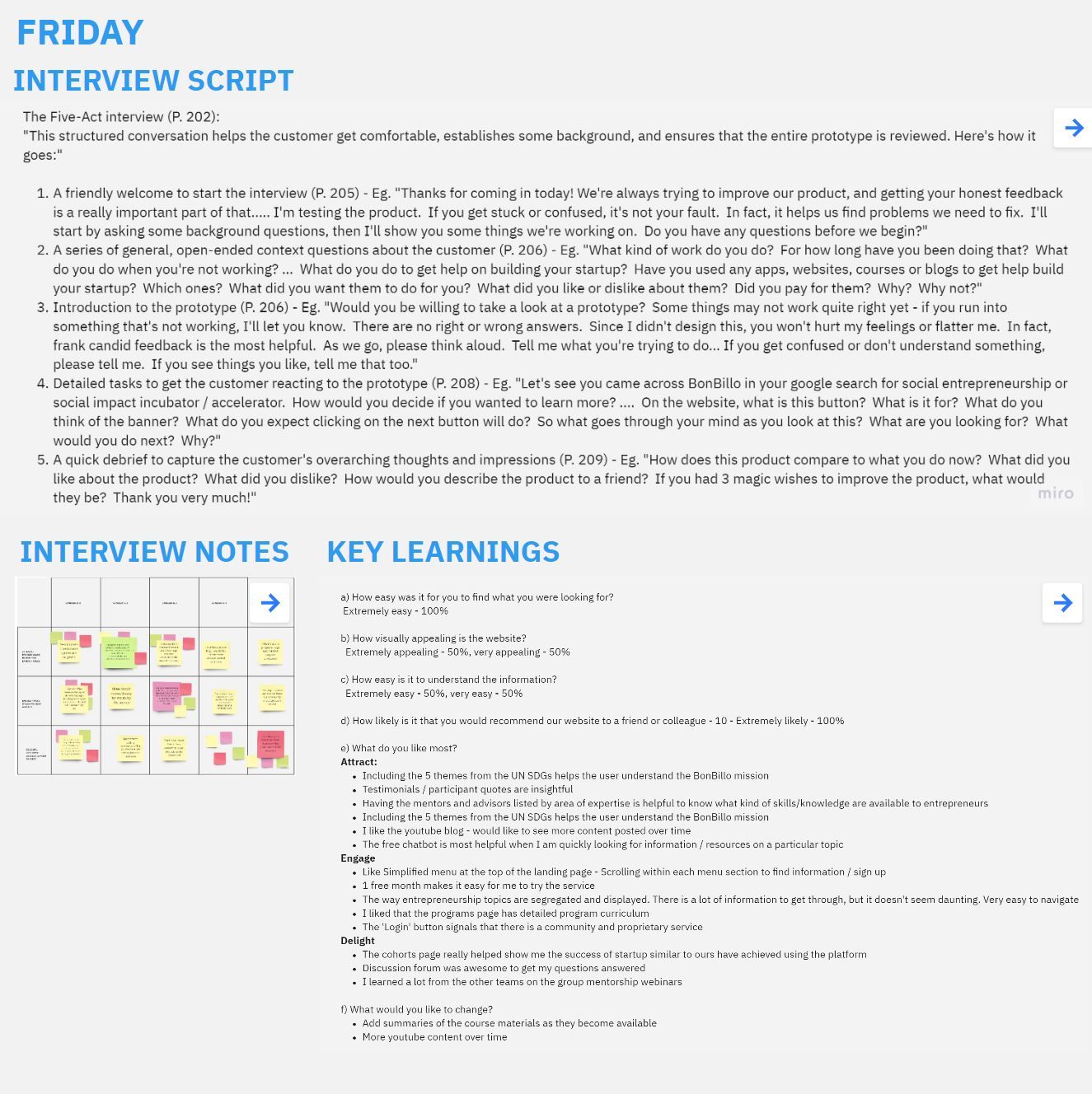
Disciplined Entrepreneurship: Map the full life-cycle use case and create a high-level product specification
Next, let's take the learnings from our Sprint to map the full life-cycle from how customers determine they need your product to how they recommend you to others as happy customers.
We can then create a high level product specification - this is essentially a brochure with features, functions and benefits to the customer. It helps provide clarity and gets everyone on the same page before building a product.
Check out our highlights on 'Full Life Cycle Use Case' and 'High Level Product Specification' by John Breslin, Senior Lecturer at National University of Ireland Galway.
John Breslin, Senior Lecturer at National University of Ireland Galway, discusses 'Mapping the Full Life Cycle Use Case’ with examples from 'Disciplined Entrepreneurship'.
John Breslin, Senior Lecturer at National University of Ireland Galway, discusses 'High Level Product Specification’ with examples from 'Disciplined Entrepreneurship'.

.jpg)
